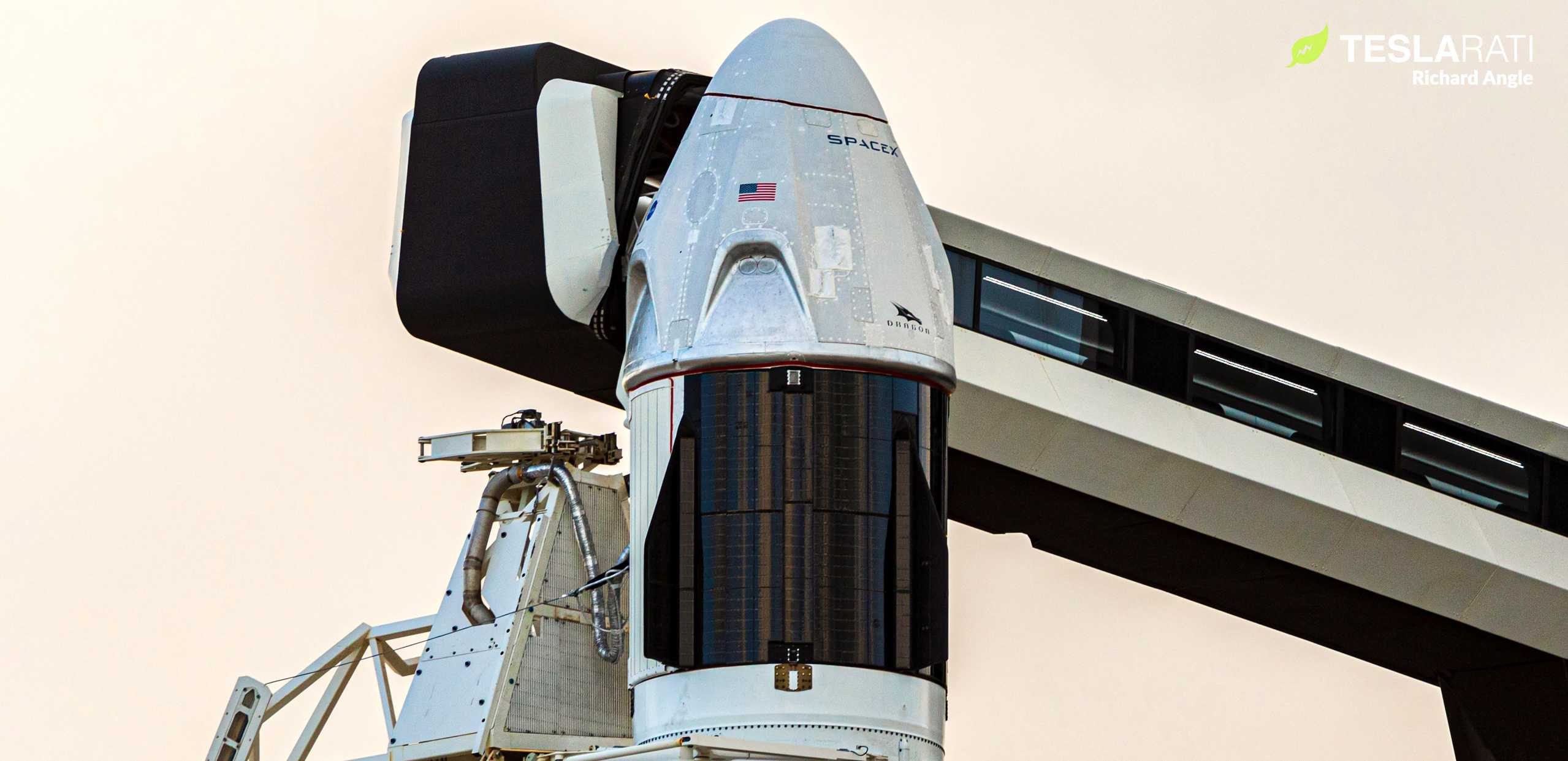
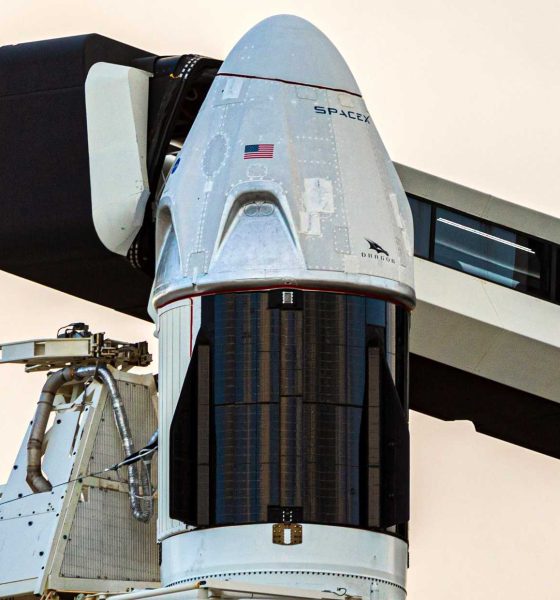
News
NASA has good news after SpaceX Crew Dragon parachute test accident
NASA has good news after SpaceX suffered an accident that destroyed a Crew Dragon mockup before it could complete a parachute test, indicating that the anomaly could have minimal impact on the spacecraft’s Demo-2 astronaut launch debut.
According to NASA, SpaceX and the space agency are still working to launch astronauts on Crew Dragon as early as “mid-to-late May”. While two recent challenges – the loss of the spacecraft’s most important parachute testing mockup and an unrelated in-flight rocket engine failure – could both singlehandedly delay Demo-2 in certain scenarios, NASA continues to state that a May timeframe is still in the cards. This is an excellent sign that both issues – as previously speculated on Teslarati – are probably much less of a problem than they otherwise could be.
As of now, all Demo-2 hardware – including Falcon 9 booster B1058, a new Falcon upper stage, Crew Dragon capsule C206, and an expendable Dragon trunk – are all believed to be in Florida and technically ready for flight. Waiting for launch at and around Kennedy Space Center (KSC) Launch Complex 39A, the long straw for SpaceX’s inaugural astronaut launch is most likely the completion of formal paperwork and reviews, most of which must be done primarily by NASA employees. SpaceX’s latest technical challenges certainly toss some uncertainty into the mix and serve as a reminder that nothing can or should be taken for granted in human spaceflight but on the whole, there is reason for optimism.
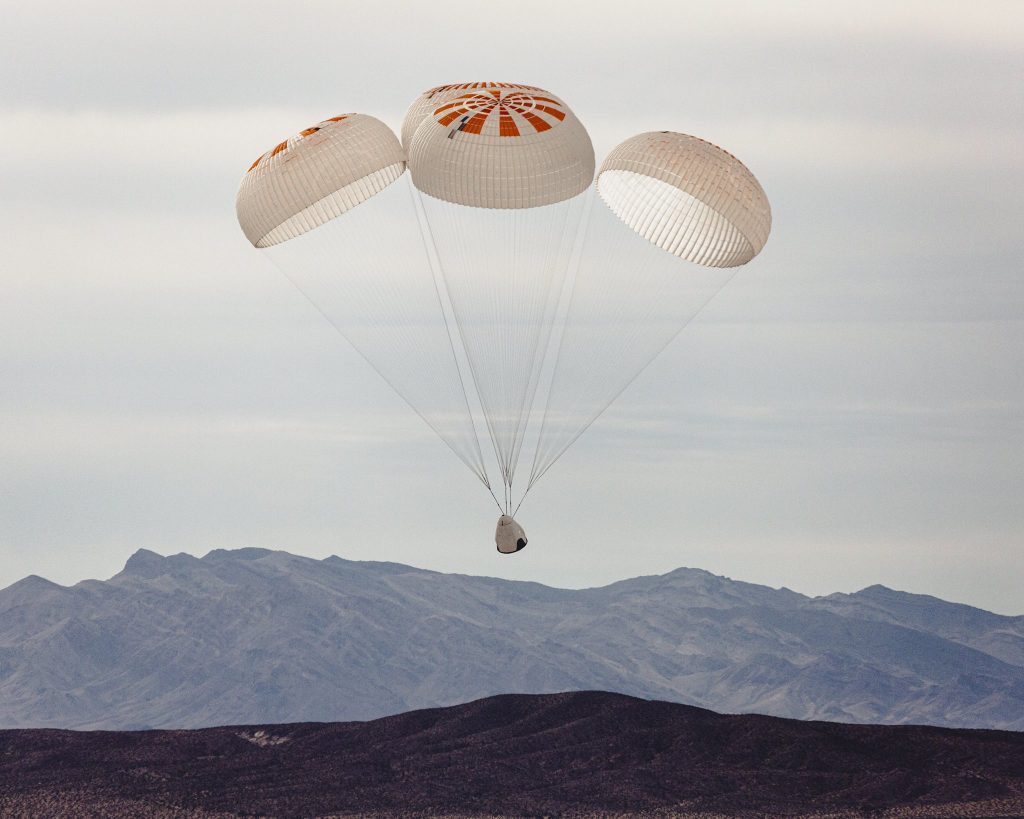
“To date, SpaceX has completed 24 tests of its upgraded Mark 3 parachute design they are working to certify for use on the Crew Dragon spacecraft that will fly NASA astronauts to the International Space Station. The system was used during the SpaceX in-flight abort test in January.
On March 24, SpaceX lost a spacecraft-like device used to test the Crew Dragon Mark 3 parachute design. The test requires a helicopter to lift the device suspended underneath it to reach the needed test parameters. However, the pilot proactively dropped the device in an abundance of caution to protect the test crew as the test device became unstable underneath the helicopter. At the time of the release, the testing device was not armed, and a test of the parachute design was not performed.
Although losing a test device is never a desired outcome, NASA and SpaceX always will prioritize the safety of our teams over hardware. We are looking at the parachute testing plan now and all the data we already have to determine the next steps ahead of flying the upcoming Demo-2 flight test in the mid-to-late May timeframe.”
NASA.gov — March 26th, 2020
While the challenges SpaceX and NASA still have to surmount are thus significant, it’s safe to say that Crew Dragon’s track record more than earns it some optimism as the spacecraft nears the T-1 month mark for what will arguably SpaceX’s most significant launch ever.
Following a successful Pad Abort test in May 2015, the company spent several years working head down. In mid-2018, SpaceX’s first finished Crew Dragon spacecraft successfully passed through electromagnetic interference (EMI) and thermal vacuum (TVac) testing, arriving at the launch site for preflight processing by July. Unfortunately, for unknown reasons, it took more than half a year more for NASA to finally permit Crew Dragon to launch.
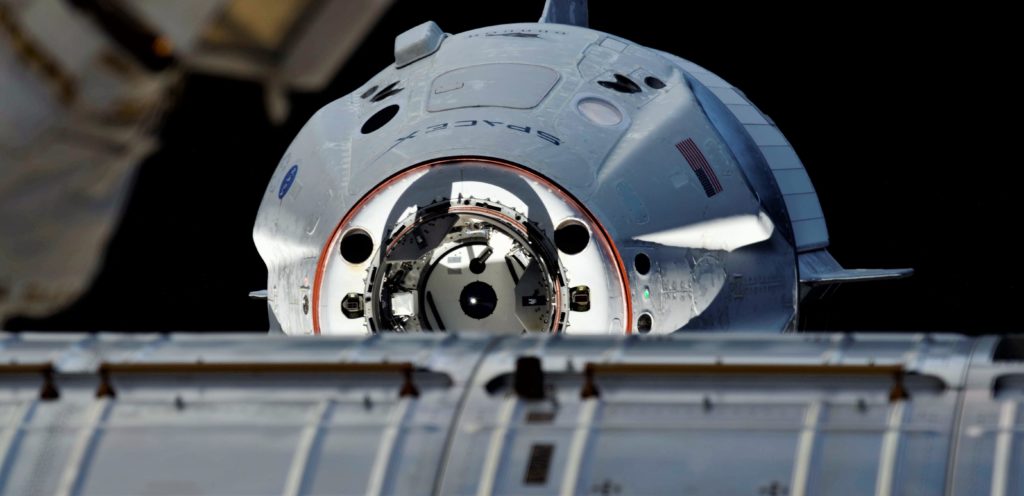
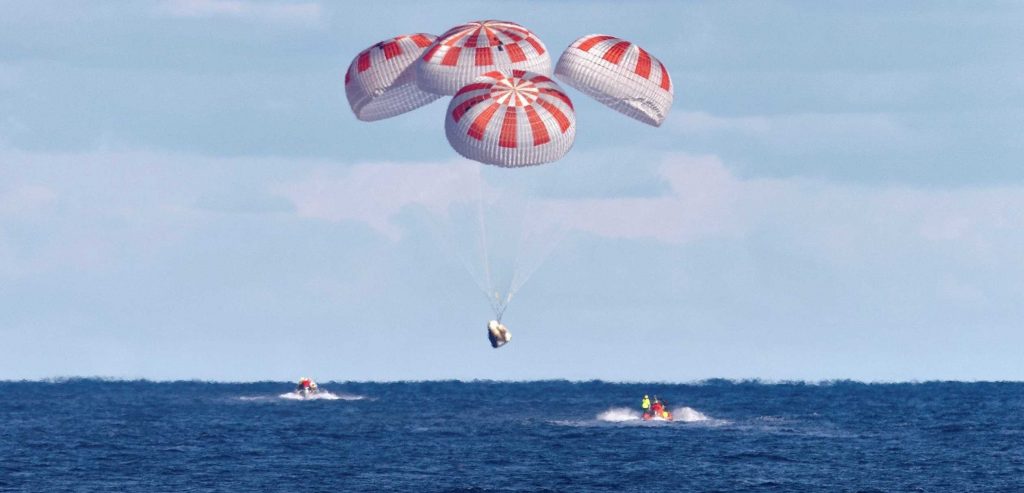
A month and a half after completing an integrated static fire test at Pad 39A, Falcon 9 and Crew Dragon lifted off for the first time ever on March 2nd, 2019. A flawless launch was followed by an equally flawless International Space Station (ISS) rendezvous and docking, completed autonomously and without issue on SpaceX’s first try. Crew Dragon capsule C201 spent five days at the station before autonomously departing, reentering Earth’s atmosphere, and gently splashing down in the Atlantic Ocean under four healthy parachutes.
Altogether, Crew Dragon’s orbital launch debut was such a flawless success that SpaceX’s own director of Crew Dragon mission management stated that he could barely believe how perfectly it went – likely expecting at least something to go slightly awry. That near-perfection certainly didn’t come easily for SpaceX. Boeing – NASA’s second Commercial Crew Program (CCP) partner – has had a far rougher go of things despite the fact that the company does technically have extensive experience building aircraft and rockets.
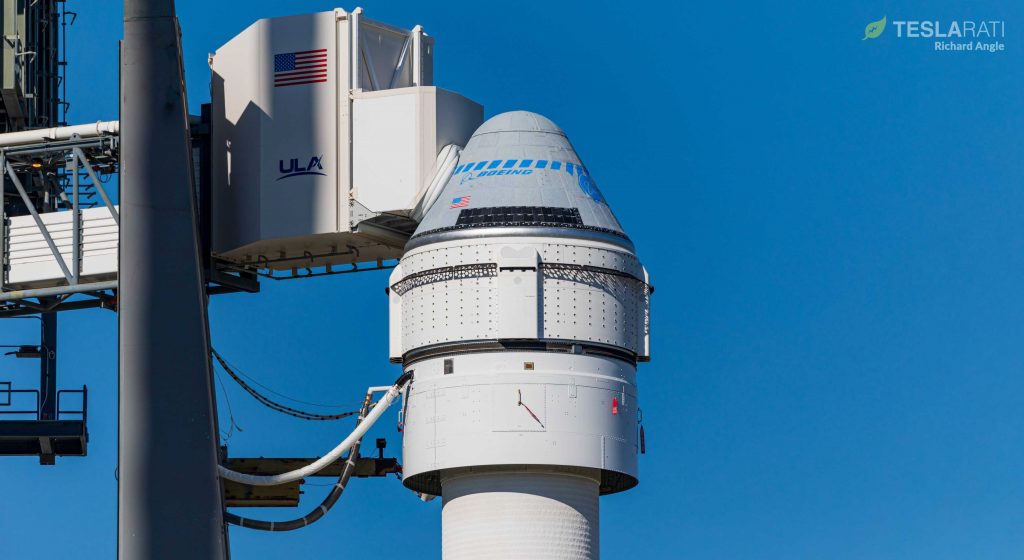
In November 2019, Boeing completed Starliner’s first fully integrated ‘flight’ test in the form of a pad abort. While the spacecraft was able to perform a soft landing, mishandling and bad quality control caused one of its three main parachutes to fail to deploy in an unintentional stress test. A little over a month later, a separate Starliner spacecraft performed its inaugural orbital launch on a ULA Atlas V rocket. From the moment Starliner separated from Atlas V, things began to go wrong. It would ultimately become clear that extremely shoddy software and an almost nonexistent integrated testing regime caused the spacecraft to waste most of its propellant and resulted in an extremely delayed orbital insertion.
While NASA and Boeing both managed to forget a second partial failure until media reporting shed light on it months later, it also turned out that another entirely separate instance of incomplete software may have nearly destroyed Starliner a matter of hours before it was scheduled to reenter Earth’s atmosphere. The spacecraft was ultimately prevented from even attempting a space station rendezvous, one of the major purposes of the test flight.


In simpler terms, Crew Dragon – even with the challenges it has and will soon face – is just shy of primed and ready for flight. As always, it’s better to be safe (and late) than sorry in human spaceflight, particularly the first such mission for SpaceX, but it’s looking increasingly likely that Crew Dragon will be on the launch pad and preparing to lift off with NASA astronauts just two or so months from now.

News
Tesla is not sparing any expense in ensuring the Cybercab is safe
Images shared by the longtime watcher showed 16 Cybercab prototypes parked near Giga Texas’ dedicated crash test facility.

The Tesla Cybercab could very well be the safest taxi on the road when it is released and deployed for public use. This was, at least, hinted at by the intensive safety tests that Tesla seems to be putting the autonomous two-seater through at its Giga Texas crash test facility.
Intensive crash tests
As per recent images from longtime Giga Texas watcher and drone operator Joe Tegtmeyer, Tesla seems to be very busy crash testing Cybercab units. Images shared by the longtime watcher showed 16 Cybercab prototypes parked near Giga Texas’ dedicated crash test facility just before the holidays.
Tegtmeyer’s aerial photos showed the prototypes clustered outside the factory’s testing building. Some uncovered Cybercabs showed notable damage and one even had its airbags engaged. With Cybercab production expected to start in about 130 days, it appears that Tesla is very busy ensuring that its autonomous two-seater ends up becoming the safest taxi on public roads.
Prioritizing safety
With no human driver controls, the Cybercab demands exceptional active and passive safety systems to protect occupants in any scenario. Considering Tesla’s reputation, it is then understandable that the company seems to be sparing no expense in ensuring that the Cybercab is as safe as possible.
Tesla’s focus on safety was recently highlighted when the Cybertruck achieved a Top Safety Pick+ rating from the Insurance Institute for Highway Safety (IIHS). This was a notable victory for the Cybertruck as critics have long claimed that the vehicle will be one of, if not the, most unsafe truck on the road due to its appearance. The vehicle’s Top Safety Pick+ rating, if any, simply proved that Tesla never neglects to make its cars as safe as possible, and that definitely includes the Cybercab.
Elon Musk
Tesla’s Elon Musk gives timeframe for FSD’s release in UAE
Provided that Musk’s timeframe proves accurate, FSD would be able to start saturating the Middle East, starting with the UAE, next year.

Tesla CEO Elon Musk stated on Monday that Full Self-Driving (Supervised) could launch in the United Arab Emirates (UAE) as soon as January 2026.
Provided that Musk’s timeframe proves accurate, FSD would be able to start saturating the Middle East, starting with the UAE, next year.
Musk’s estimate
In a post on X, UAE-based political analyst Ahmed Sharif Al Amiri asked Musk when FSD would arrive in the country, quoting an earlier post where the CEO encouraged users to try out FSD for themselves. Musk responded directly to the analyst’s inquiry.
“Hopefully, next month,” Musk wrote. The exchange attracted a lot of attention, with numerous X users sharing their excitement at the idea of FSD being brought to a new country. FSD (Supervised), after all, would likely allow hands-off highway driving, urban navigation, and parking under driver oversight in traffic-heavy cities such as Dubai and Abu Dhabi.
Musk’s comments about FSD’s arrival in the UAE were posted following his visit to the Middle Eastern country. Over the weekend, images were shared online of Musk meeting with UAE Defense Minister, Deputy Prime Minister, and Dubai Crown Prince HH Sheikh Hamdan bin Mohammed. Musk also posted a supportive message about the country, posting “UAE rocks!” on X.
FSD recognition
FSD has been getting quite a lot of support from foreign media outlets. FSD (Supervised) earned high marks from Germany’s largest car magazine, Auto Bild, during a test in Berlin’s challenging urban environment. The demonstration highlighted the system’s ability to handle dense traffic, construction sites, pedestrian crossings, and narrow streets with smooth, confident decision-making.
Journalist Robin Hornig was particularly struck by FSD’s superior perception and tireless attention, stating: “Tesla FSD Supervised sees more than I do. It doesn’t get distracted and never gets tired. I like to think I’m a good driver, but I can’t match this system’s all-around vision. It’s at its best when both work together: my experience and the Tesla’s constant attention.” Only one intervention was needed when the system misread a route, showcasing its maturity while relying on vision-only sensors and over-the-air learning.
News
Tesla quietly flexes FSD’s reliability amid Waymo blackout in San Francisco
“Tesla Robotaxis were unaffected by the SF power outage,” Musk wrote in his post.

Tesla highlighted its Full Self-Driving (Supervised) system’s robustness this week by sharing dashcam footage of a vehicle in FSD navigating pitch-black San Francisco streets during the city’s widespread power outage.
While Waymo’s robotaxis stalled and caused traffic jams, Tesla’s vision-only approach kept operating seamlessly without remote intervention. Elon Musk amplified the clip, highlighting the contrast between the two systems.
Tesla FSD handles total darkness
The @Tesla_AI account posted a video from a Model Y operating on FSD during San Francisco’s blackout. As could be seen in the video, streetlights, traffic signals, and surrounding illumination were completely out, but the vehicle drove confidently and cautiously, just like a proficient human driver.
Musk reposted the clip, adding context to reports of Waymo vehicles struggling in the same conditions. “Tesla Robotaxis were unaffected by the SF power outage,” Musk wrote in his post.
Musk and the Tesla AI team’s posts highlight the idea that FSD operates a lot like any experienced human driver. Since the system does not rely on a variety of sensors and a complicated symphony of factors, vehicles could technically navigate challenging circumstances as they emerge. This definitely seemed to be the case in San Francisco.
Waymo’s blackout struggles
Waymo faced scrutiny after multiple self-driving Jaguar I-PACE taxis stopped functioning during the blackout, blocking lanes, causing traffic jams, and requiring manual retrieval. Videos shared during the power outage showed fleets of Waymo vehicles just stopping in the middle of the road, seemingly confused about what to do when the lights go out.
In a comment, Waymo stated that its vehicles treat nonfunctional signals as four-way stops, but “the sheer scale of the outage led to instances where vehicles remained stationary longer than usual to confirm the state of the affected intersections. This contributed to traffic friction during the height of the congestion.”
A company spokesperson also shared some thoughts about the incidents. “Yesterday’s power outage was a widespread event that caused gridlock across San Francisco, with non-functioning traffic signals and transit disruptions. While the failure of the utility infrastructure was significant, we are committed to ensuring our technology adjusts to traffic flow during such events,” the Waymo spokesperson stated, adding that it is “focused on rapidly integrating the lessons learned from this event, and are committed to earning and maintaining the trust of the communities we serve every day.”








